
A battery allows you to use more of the energy being generated by your Renewable Energy Source. Adding battery storage to your Renewable Energy Source system will further reduce your reliance on an energy supplier, taking your energy savings even further.
Batteries allow you to continue powering your Home or Business with renewable energy during when your Renewable Energy Source isn’t able to generate energy. Your Renewable Energy Source converts energy into usable electricity and, more often than not, your source is producing more electricity than can be used. Without Batteries this excess is delivered to the National Grid. This means that you’ll miss out on using the energy yourself and will have to rely on your energy supplier once either the sun has set, the wind has stopped blowing or your river/stream is too low.
Battery storage technology allows you to use more of the free energy produced by your Renewable Energy Source to save money and increase independence from the National Grid.
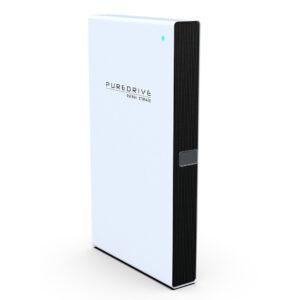
The list of the best solar batteries is growing all of the time. With the Tesla Powerwall, Powervault and Sonnen solar batteries often coming out on top as the best solar batteries.
Depending on your energy demands, the best solar battery for your home could be different to another so it’s important to compare different models. And when you are comparing solar panel battery storage systems, there are a few things to look out for:
Capacity: This is the maximum amount of energy that can be stored within a solar battery at any time. In the UK, the average household uses around 8-10 kWh of electricity every day. The maximum capacity of the best solar batteries in our list is 20 kWh with the Powervault 3. Some solar batteries are stackable which means that over time you can add more units to your solar battery storage system to increase the capacity.
Technology: All of the solar batteries featured in this article are Lithium-ion based, this is the more progressive technology and the same battery technology you’ll find in your laptops, mobile phones and electric vehicles. There is still a strong and well established market for lead-acid batteries (the kind you’d find in your car) and they are still popular with many solar power users who live off grid. Lead acid batteries are tried and tested technology that dates back over 100 years and they are cheaper in terms of upfront cost. However, Lithium-ion batteries have a lower life-time cost and operate at a much higher efficiency level.
Cycles warrantied: A solar battery cycle is the number of times it can be fully recharged from empty. Many solar battery manufactures offer warranties that guarantee a certain level of performance after a certain number of cycles. The more cycles that are warrantied, the longer the solar battery will remain above a certain storage capacity.
Powercut backup: During a powercut, not all solar batteries will continue to supply your home with renewable solar energy. Look out for models that will offer powercut backup as they will continue to work.
The table below compares the key specifications of the best solar batteries available in the UK.
| Supplier | Capacity | Technology | Cycles Warrantied | Warranty | Weight | Operating Temperature | Dimensions (HxWxD) | Mounting | Powercut backup** | Cost* | |
|---|---|---|---|---|---|---|---|---|---|---|---|
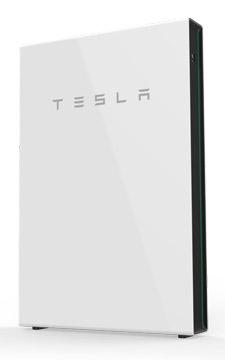 |
Tesla Powerwall 2.0 | 13.5 kWh | Lithium-ion | n/a | 10 years | 114kg | -20°C to 50°C | 1,150 x 753 x 114mm | Floor or wall-mounted (indoor or outdoor) | Yes | £7,900+ |
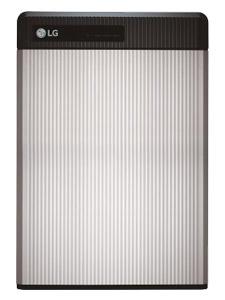 |
LG Chem Resu | 3.3 – 13.1kWh | Lithium-ion | 6,000 | 10 years | 31 – 98.5kg | -10°C to 45°C | 452 x 403 x 120mm to 744 x 907 x 206mm | Floor or wall-mounted (indoor or outdoor) | No | £2,628+ |
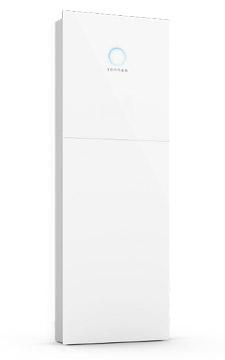 |
Sonnen Batterie Eco | 2 – 16 kWh | Lithium-ion | 10,000 | 10 years | 71 – 273kg | 5°C to 40°C | 702 x 641 x 221mm to 1839 x 641 x 221mm | Floor/Wall | Yes | £4,500+ |
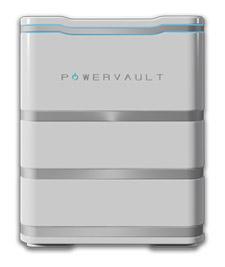 |
Powervault 3 | 4 – 20 kWh | Lithium-polymer | >6,000 | 10 years | 129 – 329 kg | 0°C to 35°C | 97 x 100 x 25 to 212 x 100 x 25 | Floor or wall-mountable | No | £4,740 – £14,820 |
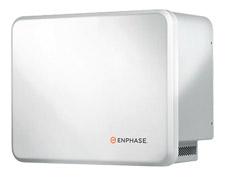 |
Enphase | 1.2 kWh | Lithium-ion | 7,300 | 10 years | 25 kg | -20°C to 45°C | 325 x 390 x 220mm | Wall-mounted indoors | No | £1,700+ |
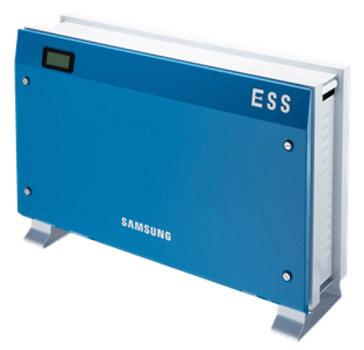 |
Samsung SDI | 3.24 kWh | Lithium-ion | 6,000 | 5 years | 95kg | -10°C to 40°C | 1,000 x 267 x 680mm | Floor | Yes | £3,500+ |
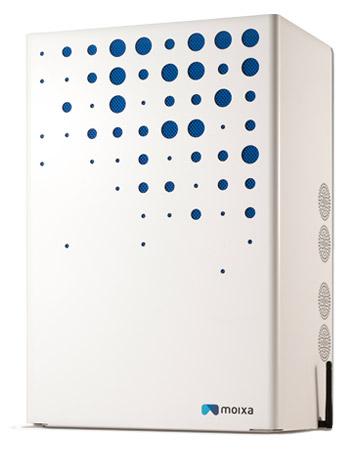 |
Moixa Smart Battery | 2-3 kWh | Lithium Ion Phosphate – LiFePO4 | 10,000 | 10 years *Lifetime with GridShare | 39.7 – 48.7kg | -5°C to 40°C | 505 x 345 x 245mm | Wall | No | £2,950 – £3,450 |
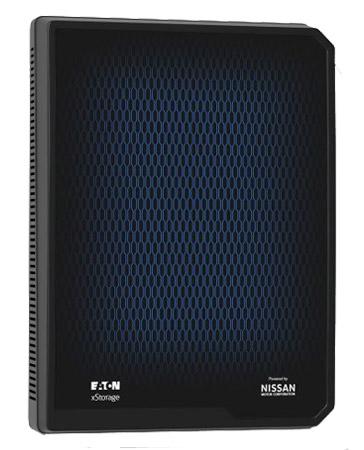 |
xStorage by Nissan | 3.6 – 10.08 kWh | Lithium-ion | n/a | From 5 years for 4.2kWh system, 10 years for 6kWh system | 135kg | 0°C to 30°C | 1,230 x 890 x 220mm | Wall | No | £3,000 |
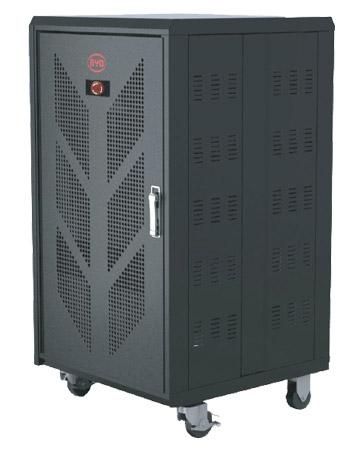 |
BYD B-BOX | 2.5 – 10 kWh | Lithium Iron-Phosphate | 6,000 | 5 years | 88 – 202kg | -20°C to 55°C | 1,000 × 600 × 600mm | Floor | No | £1,700+ |
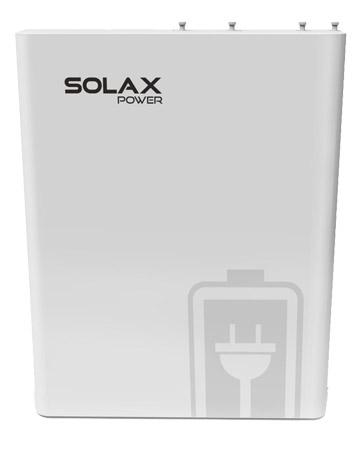 |
Solax Battery | 3.3 – 6.5kWh | Lithium-ion | 3,000 | 10 Years | 26 – 44kg | n/a | 330 x 450 x 110mm | Wall | Yes | £1,920+ |
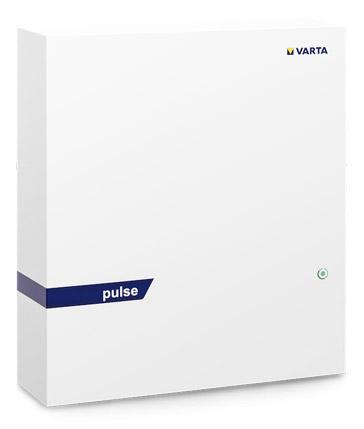 |
Varta Pulse | 3.3 – 6.5kWh | Lithium-Ion | 4,000 | 10 Years | 45 – 65kg | 5°C to 30°C | 600 x 690 x 190mm | Wall | No | £3,579+ |
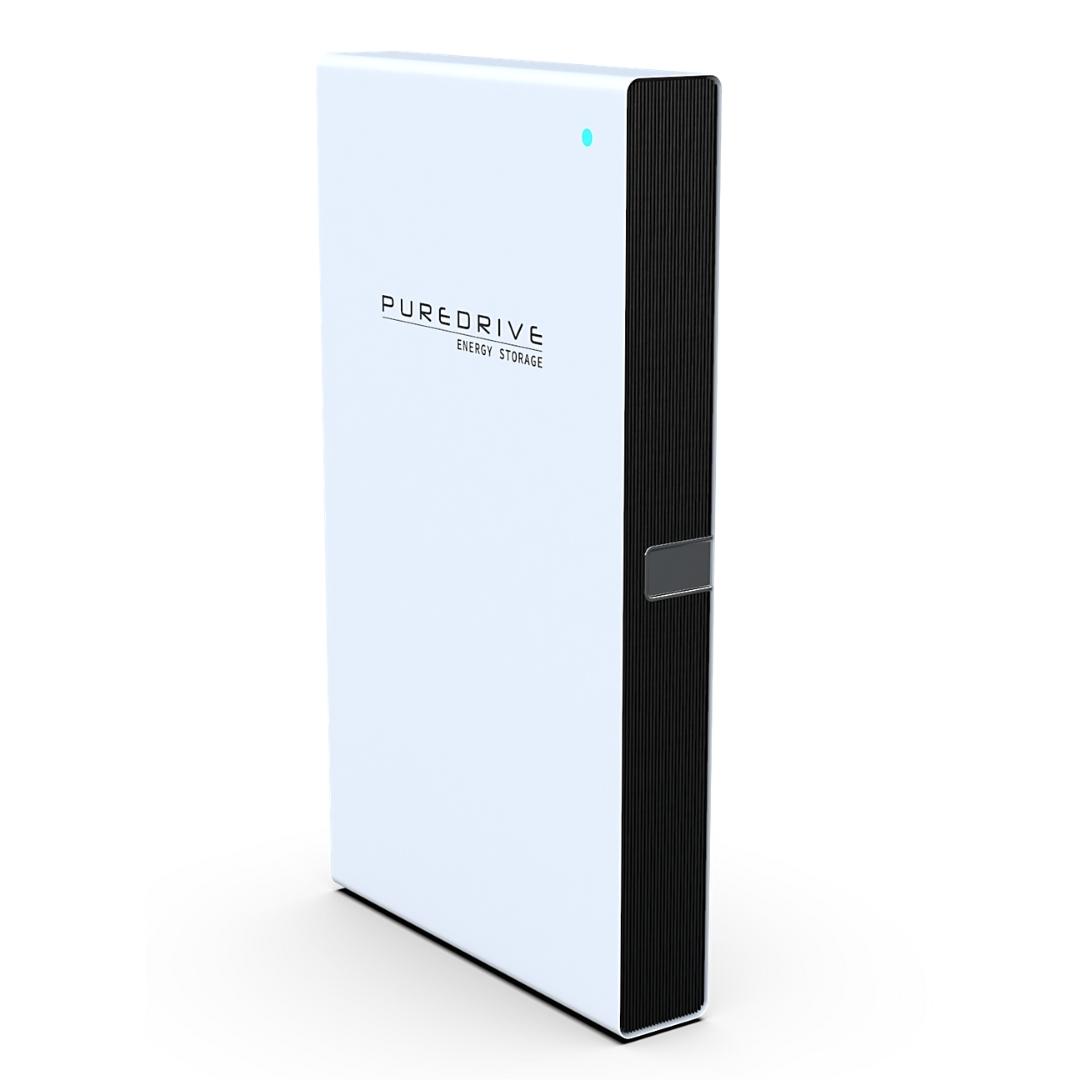 |
Puredrive PureStorage AC Battery | 5 – 10 kWh | LiFePO4 Lithium ion Phosphate | 10,000 | 10 Years | 75 – 119kg | -20°C to 60°C | 550/850 x 1,460 x 165mm | Floor/Wall | Yes | £3,157+ |
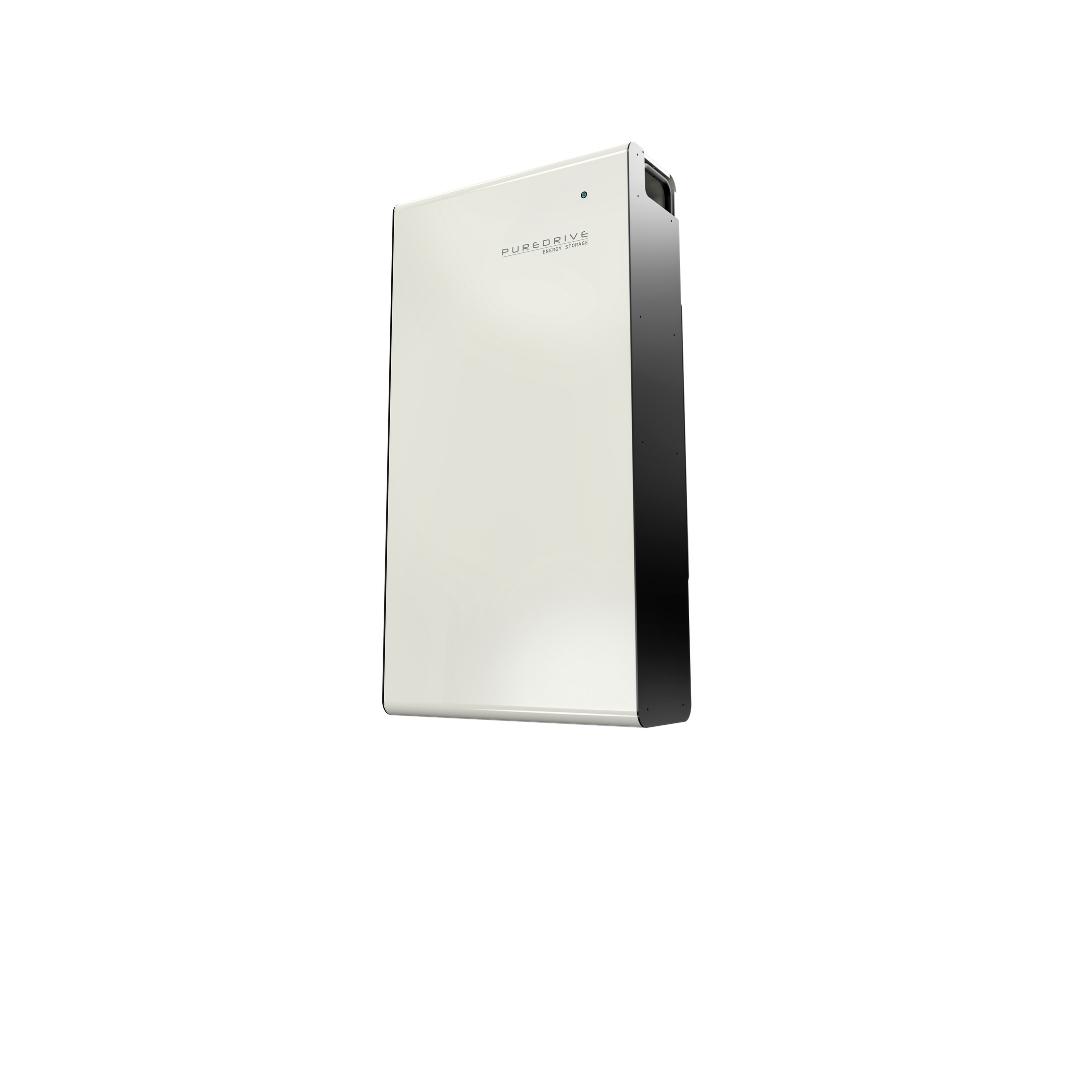 |
Puredrive PureStorage DC Hybrid | 5kWh (Modular up to 25 kWh) | LiFePO4 Lithium ion Phosphate | 10,000 | 10 Years | 57kg | -10°C to 60°C | 386.40 x 737 x 171.80mm | Wall / Floor | Yes | £1,555 |
| *Prices are estimates only and do not include installation costs which can range from £500 to over £2,000. **powercut back-up may be an optional extra and not be included as standard | |||||||||||
Not all solar batteries enable you to use solar electricity during a power cut, so if this is a priority for you make sure you choose a battery which has this functionality.
When there is a drop in voltage on the grid, solar batteries detect this and will automatically turn off the inverter and disconnect your battery from the grid as a safety precaution; engineers will be working on electricity lines on the grid and if batteries are connected to it there is a risk of electrocution. This is called islanding and is essentially a safety barrier between your incoming supply and your fuse board.
If a back-up electricity supply is important you need to be looking at an AC coupled system. At the time of writing, we were only able to find 3 battery systems available in the UK that will keep the lights on during a power cut. The Tesla Powerwall 2.0 with the Back-up Gateway. This updated version of the Powerwall 2.0 comes with a separate unit which looks like a smaller version of the battery itself and completely islands your home in the event of a power cut. The second and much cheaper option is the PureStorage battery system from PureDrive. Finally, the Samsung SDI can also provide emergency power during an outage. Always check with the manufacturer ahead of the installation as power-cut back-up may not be fitted as standard.
If retrofitting, you may also have to add the cost of an inverter to your existing solar panels which could add a further £1,000. It’s worth noting that there are quite a few ‘hybrid’ systems which combine an inverter and battery storage.
The table below details all you need to know to make a fair comparison but, as price is a major factor in any purchase, we’ve extracted the prices out for quick reference and categorised them as either a full energy storage system (includes an inverter) or a battery on its own that requires a separate inverter if you want to connect it to a solar pv system.
| Full Energy Storage Systems (Solar Battery & Inverter) | |
|---|---|
| Tesla Powerwall 2.0 with Backup Gateway 2 | £7,900+ |
| Puredrive Energy Storage System | £3,492+ |
| Samsung SDI ESS | £3,500+ |
| Nissan xStorage | £6,446+ |
| Enphase | £1,700+ |
| Sonnen Batterie Hybrid | £4,500+ |
| Powervault 3 | £4,740 – £14,820 |
| Moixa Smart Battery | £2,950+ |
| Solar Battery Only (will require an inverter to connect to solar panels) | |
| LG Chem Resu | £2,628 |
| Sonnen Batterie Eco | £4,500+ |
| BYD B-BOX | £1,700+ |
| Solax Triple Power | £1,920+ |
| Varta Pulse | £3,579+ |
If you’re looking to invest in a solar battery and solar panels at the same time, then you can find a list of the Best Solar Panels here.
Get Free Solar Battery Quotes: Contact us today on 01432 367685 – info@arnoldengineering.co.uk
Solar panels are fitted onto a roof or exterior wall where they can be exposed to the most sunlight. Each panel includes solar cells which convert the sun’s energy into DC electricity which is then converted to AC electricity by an inverter. This can then be used to power your home.
Whatever you don’t use is sent back to the National Grid to be redistributed around the country. This means that you can only use solar energy as and when it is available, i.e. when the sun is shining. However, this is not the case if you install a solar battery…
By introducing a solar battery into the process you can keep hold of the surplus energy you’ve produced for use at another time (e.g. at night) and further reduce your reliance on the National Grid.
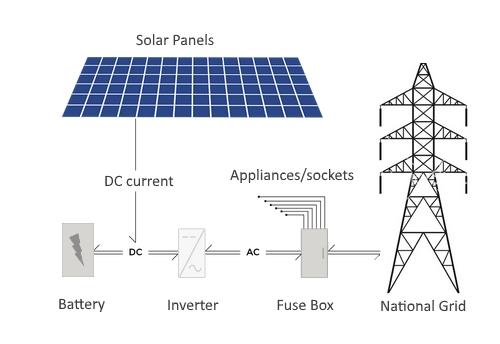
Solar energy systems that can store their own electricity have three main components:
As solar technology continues to progress many modern systems also incorporate smart technology such as apps and Wifi so you can easily monitor the battery’s charge level and general efficiency.
AC or DC?
The solar battery you choose needs to be the right size or voltage for your needs. This is very important as the wrong size could pose a very real safety risk. We highly recommend consulting with multiple professional installers about your needs before reaching a final decision.
In addition to choosing the right voltage, you will need to consider if AC or DC is the best choice for your system. The main difference is in the way the battery connects – or doesn’t connect – to your solar panels.
AC: An AC (alternating current) battery is not connected directly to your solar panels but is connected via the electricity meter. This means it is easier to retrofit to existing panels, so if you have solar panels already in place this may be the best solution for you. You will need an additional inverter to convert DC electricity to AC for use in your home and then back to DC to be stored in the battery. Powervault 3 is an example of an AC-coupled system, while Tesla’s Powerwall 2.0 is an example of a DC-coupled system.
DC: DC (direct current) batteries tend to be installed at the same time as solar panels as they connect directly to the panels. You do not need an additional inverter as it is connected before the electricity meter.
Get Free Solar Battery Quotes: Contact us today on 01432 367685 – info@arnoldengineering.co.uk
Ongoing Maintenance
A solar battery is not a simple ‘install and leave’ unit. It needs regular monitoring and maintenance to keep it working both efficiently and safely. This includes keeping it charged at an optimum level, carrying out regular power ‘boosts’ and gassing as well as ensuring it is stored at a correct temperature and protected from the weather.
Replacement Parts
Solar batteries do not last as long as solar panels. Currently, a high quality solar battery will last for around 10-15 years, but this is dependant on how much you use it and ensuring it is maintained correctly. A battery can cost up to £2,000 (not including installation) so it is a significant expense to consider.
It’s not a complete energy solution (yet)
The ultimate ambition for many is to make complete energy self-sufficiency a reality, without any reliance on the National Grid at all. While technology is certainly moving in the right direction and has made great strides in recent years, a solar battery system is still not a viable option to completely disconnect from the mains supply. Batteries have their faults, shelf-lives and limitations, so until things have progressed it’s necessary to have the option of a backup supply from the National Grid.
No. If you live in an area affected by regular power cuts then a home battery could be just the system you need to keep the lights on. On average you’ll probably get around 24 hours of backup power but this can be increased by simply installing more batteries. If you’re on an Economy 7 rate a home battery can also save you money by charging when electricity is at it’s cheapest for you to use when it’s not so cheap. Finally, you can even make money by storing energy for the National Grid who can discharge it from you in times of need.
Yes and no. Some batteries will only work when installing a new system or one that was specifically designed for it (Tesla Powerwall 2) and some systems will retrofit to any system.
They are as safe as as any other electrical item in your home. Generally installing a solar battery is not a DIY job and for the most part the public can’t buy solar batteries direct from the manufacturer but rather via an approved installer.
This is the ‘usable’ amount of energy in kWh (units) that the battery will store. It’s never a good idea to run a battery down to empty as it will cause damage, so when you are comparing capacities remember to check if the figure given is ‘total’ or ‘usable’.
The power output of a solar battery is, quite simply, how much power the battery can deliver at one time. The more electrical appliances and lights etc. that you plan to power with the battery, the higher this will need to be.
The Feed-in Tariff (FiT) scheme has now closed. Back in 2010, the government introduced the Feed-in Tariff scheme which paid owners of eligible PV systems for every kWh of energy they generated and each kWh of unused energy which was exported to the National Grid. Although this scheme was a great incentive for homeowners to install solar panels, it also prevented some homeowners from installing a solar battery as they feared they would receive lower payments if they did not send their surplus energy to the grid.
The FiT scheme closed to new applications in March 2019, so if you are yet to install solar PV you won’t be paid for sending your surplus energy to the National Grid and will save much more money by keeping hold of it.